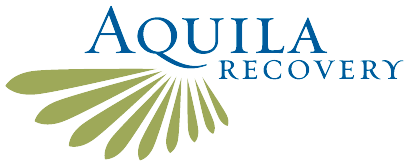There are two types of treatment programs available for those struggling with addiction: inpatient and outpatient. Subcategories within these broad classifications include intensive outpatient programs (IOP). These programs can be used as a stepping stone in treatment or as patients’ main course of action.
IOPs enable patients to continue “normal” everyday activities while receiving treatment. Although they don’t need individuals to reside on-site at the treatment center, they are comparable in complexity to inpatient or residential programs.
IOPs’ primary purpose is to aid patients in reintegrating into society after receiving inpatient care or hospitalization. They can get the help they need from the group to stay sober and manage a relapse when and if it happens.
How to Prepare for an Intensive Outpatient Treatment Program

Despite patients not staying on-site, intensive outpatient programs are precisely what their name implies: intensive. Approximately fifteen hours a week are spent in treatment. For a program to be deemed intensive, it must last at least nine hours. Three to five days a week, three-hour-long therapy sessions are possible.
Most participants continue to work, go to school, or meet other obligations when not in therapy. Because of this, treatment sessions may occur at odd hours, on the weekends, or at other convenient times.
Yet, some individuals take time off from their other obligations while enrolled in an IOP program, despite the flexibility these programs provide. Before starting therapy, you and a medical team will discuss what suits you the best.
IOPs incorporate a lot of the other therapy elements, such as:
- Preliminary evaluation and intake
- Behavioral and psychological therapies
- Peer-support networks
- Group sessions for addiction education
- Auxiliary services, such as housing and employment support
All trustworthy programs aid patients in growing:
- Coping abilities
- Aptitude for solving issues
- Self-awareness
- The capacity to identify unwholesome behavior
- Practicing requesting and accepting assistance through role-playing
Admission Day
Visitors must fill out intake forms and a clinical assessment when they arrive. One will be created initially if a timetable is not made in advance.
The entire therapy process, starting with the intake evaluation if wanted, is open to family members. Meetings without the client may be part of their involvement.
If detox is required, we will assist you in setting up the necessary appointments with a nearby hospital or an outpatient doctor. Detox concerns should be taken care of before your arrival.
How Long Does Treatment Last?

Nine or more hours of treatment are provided to patients. Three to eight-hour sessions are held five to seven days a week.
Sessions decrease over time depending on how well a patient performs:
- Capacity to prevent relapse
- The success of their particular treatment strategy
- Increased dependency on community assistance
Intensive Outpatient Programs vs. Inpatient Programs
Both intensive outpatient programs and inpatient programs share the same objective, which is to help addiction recovery. Each program offers a unique structure to ensure that people with various needs can attend a recovery program that is effective for them.
Where patients spend the majority of their time varies greatly amongst these programs. Participants in an inpatient program reside on-site. Participants in these residential programs spend all of their time at the treatment center.
Participants in intensive outpatient programs spend a lot of time at the institution (nine hours or more weekly), but they do not reside there.
For those with the following, inpatient or residential programs are recommended:
- Significant drug addictions
- High tolerance for their preferred drug
- Risky withdrawal symptoms
- A lack of social support
- Poor quality of life
- Previous history of dangerous or rash behavior
- Comorbidities
These programs provide a regulated, temptation-free atmosphere. These enable patients to concentrate on their healing 24 hours a day. They participate in intense, full-time counseling and treatment and continuously engage with others committed to recovery.
Even though inpatient programs are helpful, they make it challenging to return to daily life immediately once the program is through. IOPs are frequently utilized as a transitional step between inpatient rehabilitation and a return to normal activities.
Who Are IOPs Beneficial For?
IOPs give persons in addiction recovery more flexibility while still offering intensive care. An IOP is advantageous if you:
- are still receiving therapy
- are leaving a hospital or residential program
- do not require constant supervision
- have a network of supporters in your family and/or community.
- must go to a job or school while recovering
- cannot afford residential or inpatient therapy
- have a history of relapse
- manage a mental illness or co-occurring disorder
IOPs: Benefits and Disadvantages
IOPs have advantages and disadvantages, just like all treatment plans. For instance:
Pros

- There is no need to change where or how you live.
- Continuity of your daily routine
- Get in touch with a current support network
- Flexible
- More straightforward transition from therapy to daily living
- Co-occurring disorder patients have access to behavioral health care and support services
Cons
- The temptation when not in the treatment location having to adhere to treatment standards
- Greater chance of relapse than patients receiving inpatient care
Contact Us Today
If you or a loved one is struggling with issues related to substance abuse and are seeking treatment options, please don’t hesitate to reach out to our professional and compassionate staff at Aquila Recovery Clinic today for further details and information related to an IOP.
